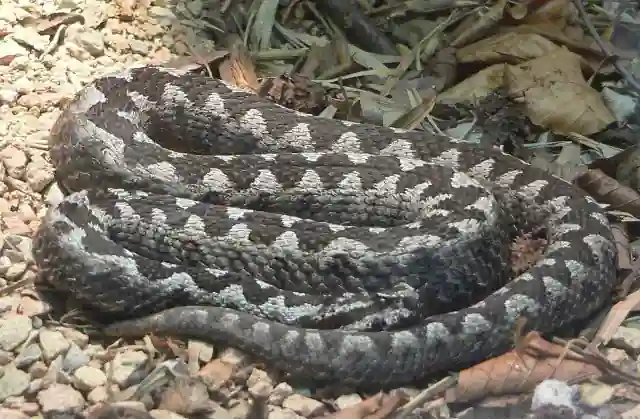
Blagoevgrad, Bulgaria – A 20-year-old woman from Kresna is in intensive care at the Blagoevgrad hospital after being bitten by a venomous snake early this morning. The incident, reported by BGNES, has raised concerns about the presence of dangerous vipers in the region.
The young woman was admitted to the Emergency Department of the Medical Center Blagoevgrad around 3:00 a.m., where she promptly received treatment with anti-snake serum.
Following initial treatment, she was transferred to the Department of Anesthesiology, Resuscitation, and Intensive Care for further observation. Hospital officials have confirmed that her condition is stable, and her life is not in danger.
Vipers, which are prevalent in the Balkans and parts of the Middle East, are among Europe’s most dangerous snakes due to their potent venom and long fangs. In Bulgaria, these snakes are commonly found in areas up to 1,450 meters above sea level.
They prefer sunny, stony locations with tall grasses, ferns, and underground burrows for shelter. Vipers are primarily diurnal, but during warm weather, they can also be active at night.
Typically, vipers measure between 50 to 70 cm in length, although it is rare for them to exceed 100 cm. They are easily identifiable by their beige to light brown coloration and a distinctive dark zigzag stripe running down their back.
In the wake of this incident, experts have reiterated important advice on how to handle snake bites. It is crucial not to bandage the affected area, apply mud, or attempt to suck out the venom, as these actions can exacerbate the situation. Symptoms of venom injection include localized pain, redness, bleeding, and numbness.
The anti-snake serum, while an effective delayed antidote, must be administered under strict medical supervision within 48 hours of the bite. However, it is important to note that the serum can cause allergic reactions in some patients.
Snake venom poses a significant risk, particularly to individuals with liver disease and children under the age of 12-13 years. The potent venom can lead to severe complications if not treated promptly and properly.
The incident has highlighted the need for increased awareness and precautionary measures in areas where vipers are common. Residents and visitors are advised to stay vigilant, especially in regions where these snakes are known to inhabit.
Wearing protective clothing, such as boots and long pants, can help reduce the risk of snake bites. Additionally, being cautious when walking through tall grasses or stony areas and avoiding reaching into unknown spaces without proper inspection are essential preventive steps.
Local authorities and healthcare providers continue to monitor the situation closely, ensuring that medical facilities are well-equipped to handle snake bite emergencies.
Public awareness campaigns and educational programs are also being considered to inform the community about the dangers of vipers and the appropriate steps to take in the event of a snake bite.
As the young woman continues her recovery in the Blagoevgrad hospital, her case serves as a stark reminder of the hidden dangers in the natural environment and the importance of immediate medical intervention in snake bite incidents.
This article was created using automation technology and was thoroughly edited and fact-checked by one of our editorial staff members
